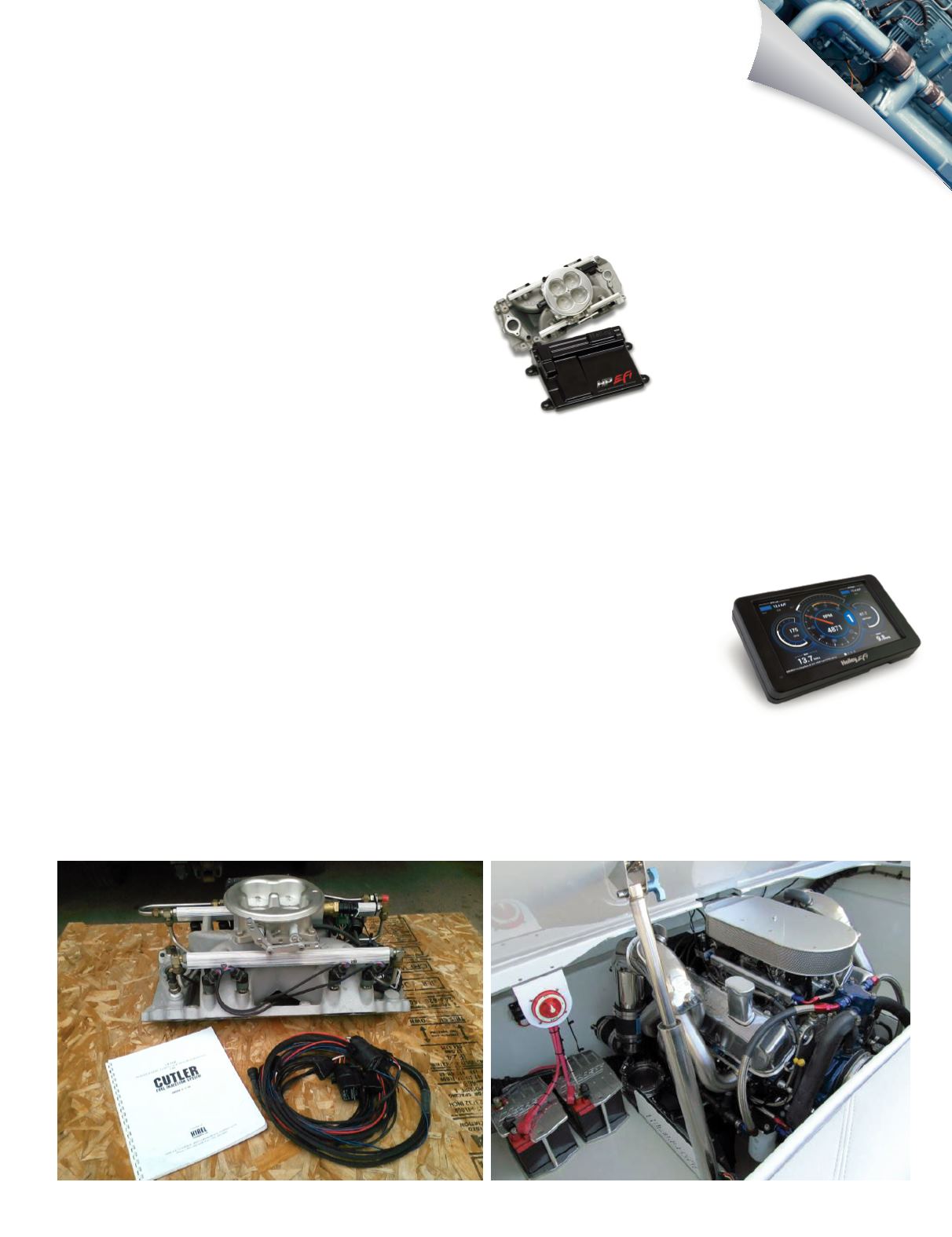
WINTER 2014 | MARINE TECHNICIAN TODAY
21
1. Changing the compression ratio of the engine. Examples
of this would be head gasket thickness changes, milling
the cylinder heads, decking the engine block, modifying
the combustion chamber size or shape, and changing the
piston design.
2. Valve train modifications. Examples of this are camshaft
profile changes to vary valve lift and duration, intake and
exhaust valve enlargement, rocker arm ratio changes, and
valve spring variations.
3. Increasing air intake capacity. Examples of this are
changing or modifying the intake manifold, porting and
polishing of the heads or intake, modifying or replacing the
throttle body, changing the flame arrestor, and modifying
the exhaust manifolds or exhaust system.
Often performance boaters desire to overcome the stock limitations of
their EFI system. The most popular engines these boaters wish to modify
are the MerCruiser 454 HO MAG at 385 HP, the 502 MAG at 415 HP, and
the 500 EFI and 525 EFI Mercury Racing engines. I contacted Bob Madara
of Marine Kinetics to get some modification advice. Bob’s background
starts as an engine development & engine builder in the Trans-Am
automotive racing series. In 2001 Bob redirected his efforts and started
his own business focusing on marine engine building and development.
Currently Bob is focusing his efforts in the development of marine engine
technology involving camshafts, valve trains, and induction systems. This
includes naturally aspirated and forced air induction systems. I specifically
asked Bob about exploring the performance potential of OEM EFI engines.
The most important mechanical parameter engines all have in common
is they are intake restricted when air flow demands exceed their design
limitations. Therefor the single most effective performance inhibitor is an
upstream intake air restriction. As performance boaters, when we move
forward on raising performance values, we are constantly defining the point
of the greatest restriction, mitigating that restriction and moving on to the
next greatest point of constraint. The common theme in the performance
development of this engine series is; there
are no downstream modifications (cylinder
heads, camshaft and valve train components) that will
compensate for an upstream air limitation. Let me clarify, a
properly sized, well developed cylinder head and camshaft combination
are the key to raising output, however they will only enhance performance
up to and not beyond the point of the intake limitations.
To demonstrate this point we can look at
Nascar racing. When they need to reduce
horsepower because of safety concerns
they require the installation of a restrictor
plate. By reducing the airflow into the
engine they can drastically reduce the
horsepower created. Even the incredibly
talented engineers of Nascar understand
that their only compensation is in
efficiency. That’s exactly what’s required in the modification of any intake
restricted engine. You can increase finite measurable gains downstream
of the intake by optimizing exhaust, compression ratio, cam profile etc.
However, once you have exceeded the limitations of the intake manifold,
this becomes the liming factor in your power output.
The engines offered by the OEM’s
need to be a compromise between
performance, durability, and price.
These compromises usually are not to
the benefit of the performance boater. To
improve performance you first you have
to increase the airflow into the engine
and improve the hard parts of the engine
such as changes to the camshaft, valves,
pistons, etc. The second challenge to enhance the engines performance
potential is the electronic engine management systems. Ultimately, the
success or failure of our project will fall on our abilities to tune & calibrate
the engine. Regardless of how well we have addressed the design of
the hard parts in the system, without the correct tune and calibrations


